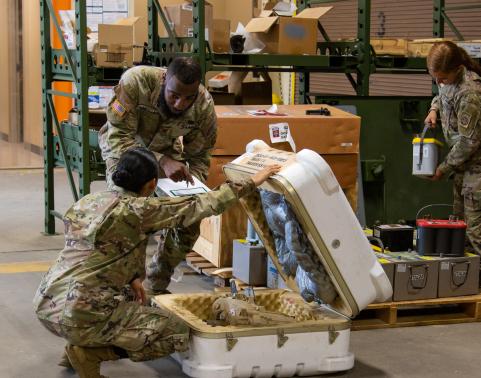Improving Army operations with Integrated Business Planning Demand Planning

In a strategic move aimed at enhancing Army demand planning and forecasting capabilities, in March 2024, the Logistics Modernization Program (LMP) successfully implemented Integrated Business Planning (IBP) Demand Planning, replacing the existing Supply Chain Management Demand Planning system.
This transition, focused on Class II (clothing and equipment) and IX (repair parts and components) materials for the Army Materiel Command (AMC) and its Lifecycle Management Commands (LCMCs), provides a user-friendly experience, facilitates efficient planning and forecasting processes and enables “what-if” simulations to empower users to explore various scenarios and make data-driven demand planning decisions with confidence.
One of the standout features of IBP Demand Planning is its advanced forecasting techniques, which leverages historical data, statistical algorithms and machine learning to generate accurate demand forecasts for both types of materials. This capability enables AMC to anticipate trends and Soldier needs with precision, leading to optimized inventory levels and improved customer satisfaction. Additionally, IBP Demand Planning offers customizable planning views and real-time alerts, allowing users to monitor key performance indicators and proactively address potential issues through the LMP system. This level of customization and flexibility enhances the Army’s ability to quickly adapt to changing demand conditions and business requirements in the field.
Furthermore, the implementation of IBP Demand Planning has empowered subject matter experts within the LCMCs to take on more strategic roles in forecast analysis and simulations. This decentralization of tasks has increased efficiency and agility within the organization, driving continuous improvement and operational excellence.
By adopting IBP as a Software as a Service solution through a global provider of enterprise resource planning systems, the Army benefits from centralized hosting, regular technical and functional updates, and access to the latest innovations in demand planning technology. The subscription-based model ensures cost-effective scalability, enables the Army to stay at the forefront of industry best practices and provides users with the latest and greatest demand planning solutions at their fingertips.
The LMP’s successful transition to IBP Demand Planning is revolutionizing the Army’s planning processes, enabling users and leaders to make informed decisions, optimize resources and achieve operational excellence in a dynamic demand planning environment.
LMP is part of Program Executive Office Enterprise Information Systems’ Defense Integrated Business Systems portfolio.
Related News
-
GFEBS pilot of SAFe Lean Business Case saves time, money for customers
June 11, 2025As part of U.S. Army Program Executive Office (PEO) Enterprise’s Agile transformation, which began in late 2022, the organization’s acquisition programs have been implementing Scaled Agile Framework® (SAFe®) principles. -
Army navigates challenges to deliver modernized GFEBS G-Invoicing solution
November 15, 2024U.S. Army Program Executive Office (PEO) Enterprise and the Office of the Assistant Secretary of the Army for Financial Management & Comptroller (ASA-FM&C) are continuing to modernize the General Fund Enterprise Business System (GFEBS). -
Army reaches another key milestone with its modernized contract writing system
November 4, 2024U.S. Army Program Executive Office (PEO) Enterprise and the Office of the Deputy Assistant Secretary of the Army for Procurement (ODASA(P)) recently achieved another key milestone with the modernized Army Contract Writing System (ACWS).
Work for Us
Join a winning team! Search for job opportunities with PEO Enterprise.
Work with Us
Help support important missions. Explore ways your company can work with PEO Enterprise.